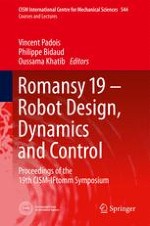Parallel robots modeling and analysis.- Parallel robots design, calibration and control.- Robot design.- Robot control.- Mobile robots design, modeling and control.- Humans and humanoids.- Perception.
The papers in this volume provide a vision of the evolution of the robotics disciplines and indicate new directions in which these disciplines are foreseen to develop. Paper topics include, but are not limited to, novel robot design and robot modules/components, service, rehabilitation, mobile robots, humanoid robots, challenges in control, modeling, kinematical and dynamical analysis of robotic systems, innovations in sensor systems for robots and perception, and recent advances in robotics. In particular, many contributions on parallel robotics from leading researchers in this domain are included.
